Varied experiences help DNR firefighters continue training
For wildland firefighters, training is a continual endeavor throughout their careers.
With typically several large wildfires burning in the western United States each summer, the Michigan Department of Natural Resources is often among those agencies called upon to send available firefighters and equipment to help battle those challenging wildland blazes, which often blacken thousands of acres.
The chance to work on fires big and small provides opportunities for veteran firefighters to team up with those new to firefighting, to pass on tips and skills, and for those just learning, to gain important hands-on training under real-life wildfire conditions.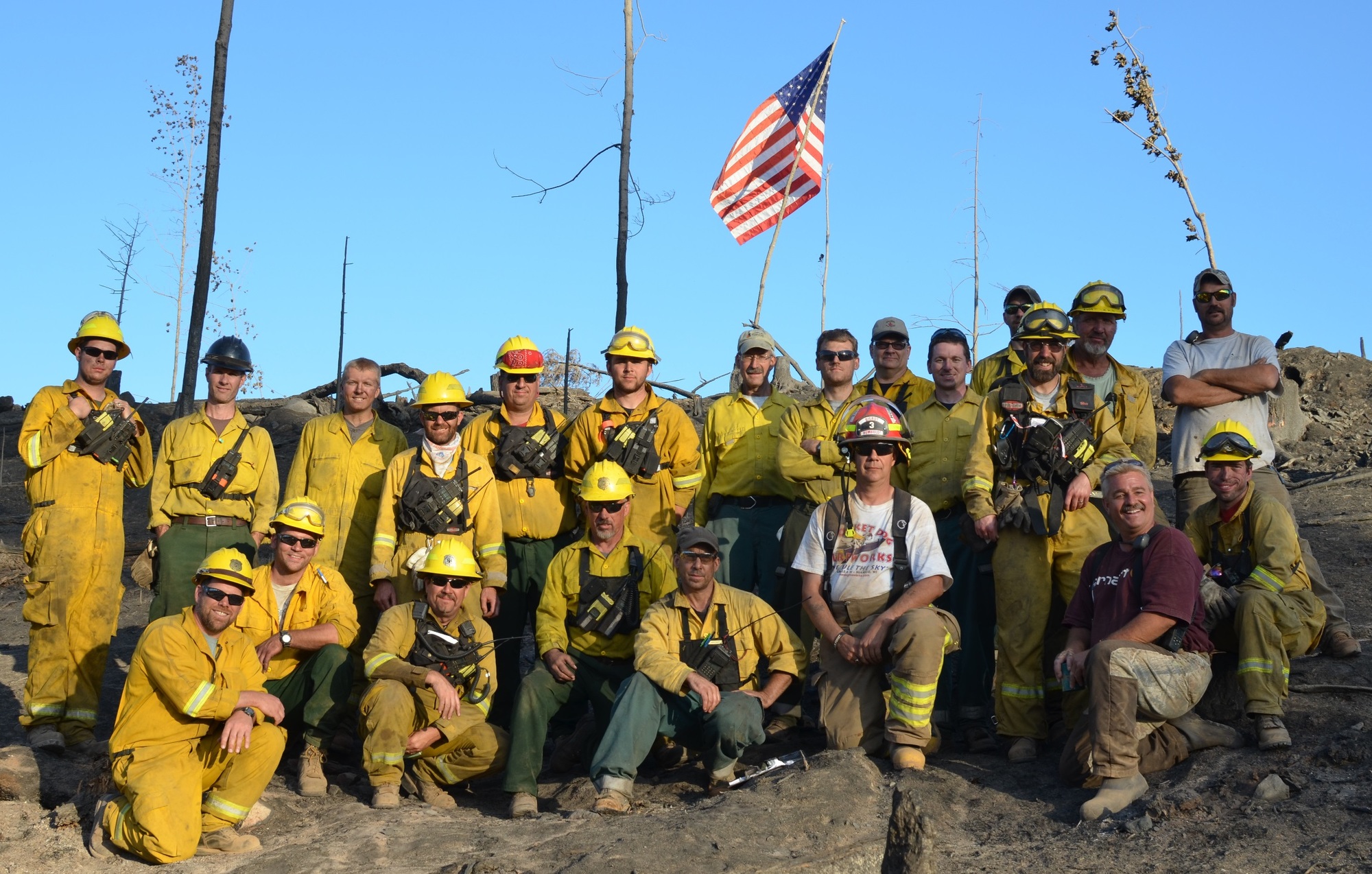
“When we are able to dispatch our folks out-of-state to provide assistance it’s a win-win situation for all,” said Dan Laux, a DNR wildfire specialist who coordinates statewide training and out-of-state dispatches for the DNR.
“We provide valuable help to the other agencies that are currently battling wildfires and help fulfill the needs they have at the time," Laux said. "Our employees gain valuable experience and knowledge that comes with fighting larger wildfires in different geographic regions, working in different terrain, fuel types, weather conditions, along with various national ground and air resources – all while functioning under a large Incident Management Team command structure.”
Roles and reimbursement
The firefighters serve in several capacities, including roles as fire line managers, heavy equipment bosses and operators, public information officers and various incident management positions.
Efforts and resources the DNR puts toward assisting its partners nationally – under cooperative mutual aid agreements – allow Michigan to receive those same benefits when the state experiences large fire activity or extreme fire conditions.
When the DNR dispatches firefighting forces nationally, or to Canada, to help out where the need is, adequate coverage is always maintained in Michigan to handle the current fire situation and respond to any fire activity reported.
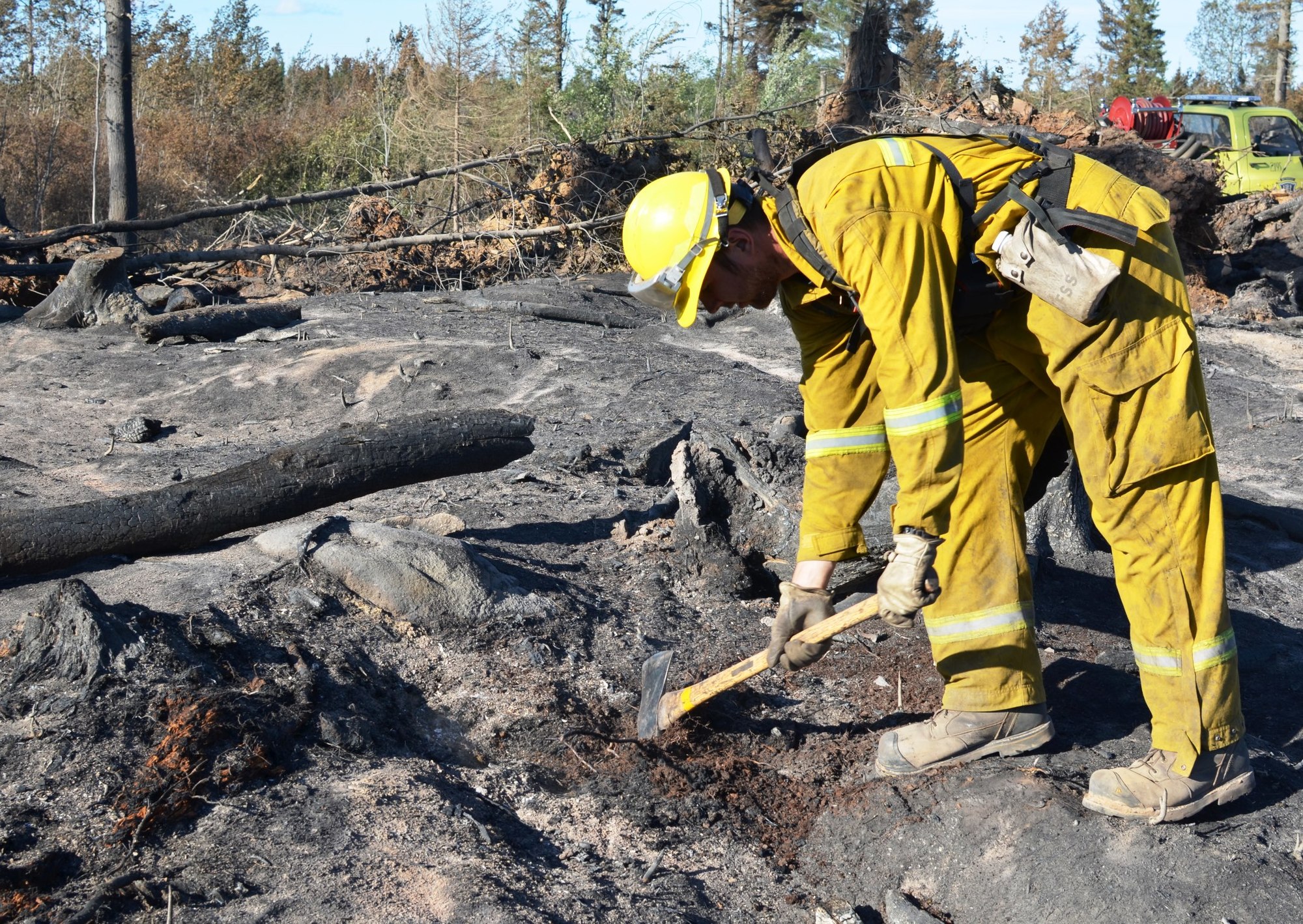 The DNR is reimbursed wages and any costs incurred during the dispatches of DNR staff to other parts of the country or to Canada. The DNR is reimbursed wages and any costs incurred during the dispatches of DNR staff to other parts of the country or to Canada.
“We have had crews, engines, overhead personnel, along with large aircraft support on many fires, as well as to backfill stations when our crews were committed to a large fire, such as the Duck Lake Fire in Luce County (2012), or even smaller, large commitment fires like County Road 601 Fire (2015) in Marquette County that lasted several days,” Laux said.
The Duck Lake Fire burned 21,069 acres, caused $4.1 million in damage and destroyed 136 structures. The County Road 601 Fire charred 80 acres, including several decks of piled logs, in an area where loggers were hauling out cut timber.
Manitoba
In 2015, 73 DNR firefighters were deployed out west from Michigan, some more than once.
Among them were Jacob “Jake” Burton, 21, of Ishpeming and Ed Rice, 42, a DNR forester at the Crystal Falls office and a 10-year firefighting veteran.
“We got helicoptered in to basically Manitoba wilderness and set up a camp where we had to cook and everything, and (we) worked with some local initial attack crews and assisted them in fighting the fire,” Rice said. “It was roughly a 200-acre fire we were on.”
Rice met Burton for the first time on the Manitoba trip.
“He was actually on my crew. We were a four-person crew,” Rice said. “Up in Canada they run four-person crews, rather than 20-person crews like (in the western U.S.), and I was a crew boss and Jake was a crew member.”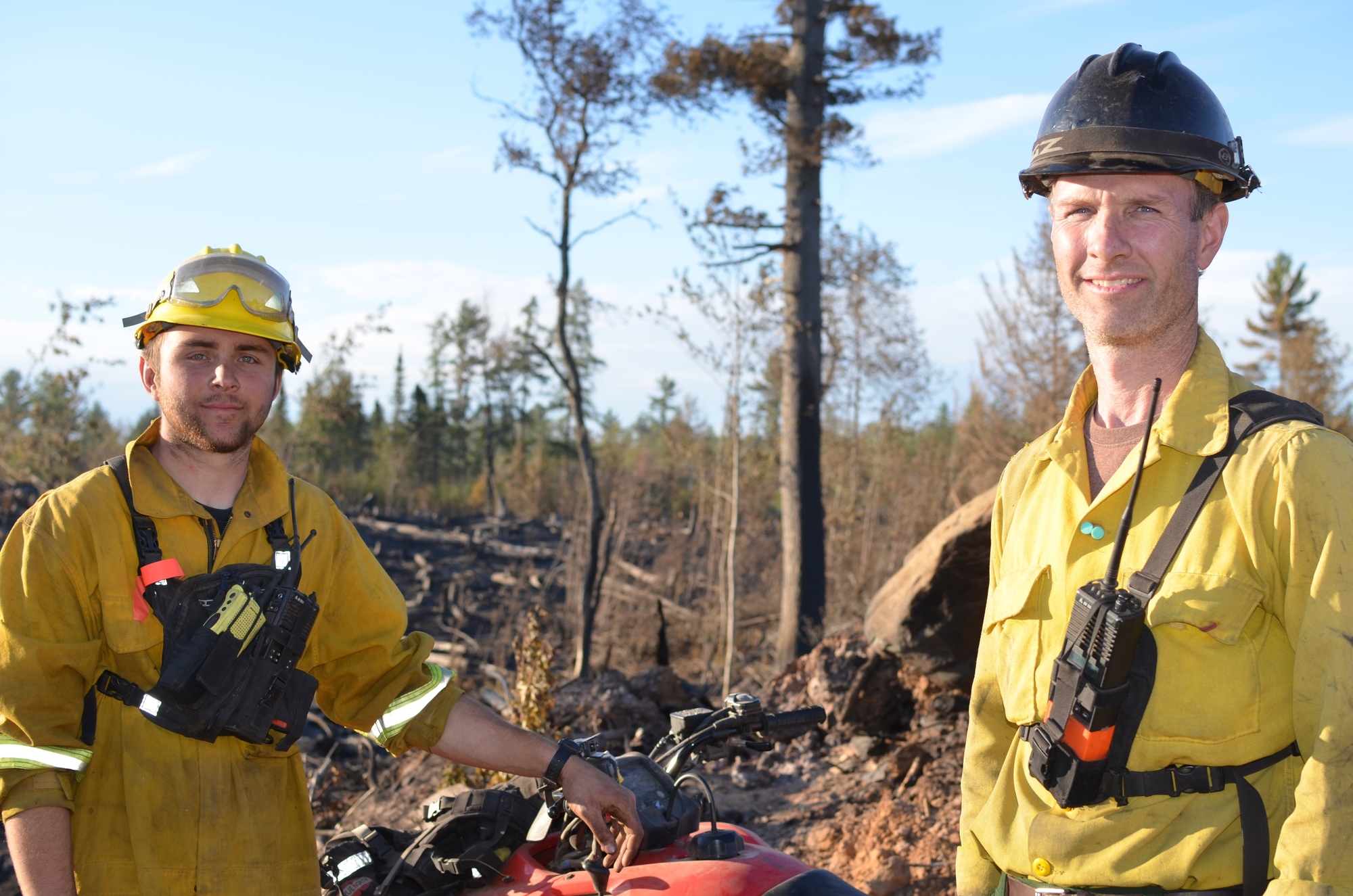
Burton and Rice were dispatched to Manitoba in July, under the Great Lakes Forest Fire Compact — a resources and manpower sharing agreement between Michigan, Wisconsin, Minnesota, Ontario and Manitoba.
“I was actually working with a surveyor and got a call on Wednesday or Thursday asking me if I wanted to go to Manitoba, I said, ‘Yes’ and I left that Friday,” Burton said. “So it was pretty last second. I’ve been to Canada on hunting trips and whatnot, but that was my first time in Manitoba.”
The blaze was burning on flat terrain, in jack pine and spruce. Rice and Burton were on the fire for eight days.
“It’s fantastic,” Rice said. “You’re basically getting paid to camp out in the wilderness and fight fire, which is great. Myself, I’ve always kind of been lacking helicopter experience, that’s something I wanted to get and helicopter transport up there basically is like pick-up trucks, it’s the only way to get into fires.
“So we definitely got really good helicopter experience and then also just camping right out on the fire is something that I enjoy doing. It’s something you don’t often get to do, even in the western states. It’s something kind of special.”
Burton said the experience taught him a lot.
 “It was great working with Ed,” Burton said. “He’s really knowledgeable on fire. I mean he loves fire. So it was just good to be around a guy like that and see what he does out on a fire and just learn from him.” “It was great working with Ed,” Burton said. “He’s really knowledgeable on fire. I mean he loves fire. So it was just good to be around a guy like that and see what he does out on a fire and just learn from him.”
Working for the DNR
A week and a half later, the men were working together again, this time on the County Road 601 Fire, which was the largest wildfire in the Upper Peninsula in 2015.
Burton, the son of a township fire chief in Mackinac County, started his firefighting work with the DNR as a key man at the Gwinn office. He then was hired in May 2015 in Marquette as a fire student – a Northern Michigan University student studying criminal justice and wildland fire.
“They’ve had forestry students in the past and now they wanted to do one on the fire side,” Burton said. “I started the year doing prescribed burns.”
Burton was sent to several DNR offices in the U.P. to help get him acquainted with the agency’s Forest Resources Division duties.
“I’ve worked with foresters, surveyors and been working with mechanics at the shop, going over the trucks and seeing how they work,” he said.
“It’s been great,” Burton said about his development with the DNR. “I’ve been all over the place working with everybody in the U.P. so, it’s been good to learn what goes on and see how they do things.”
He worked on Ishpeming Township’s structural fire department for three years, prior to coming to the DNR in the student role. He’s also been on some small brush fires with the township department.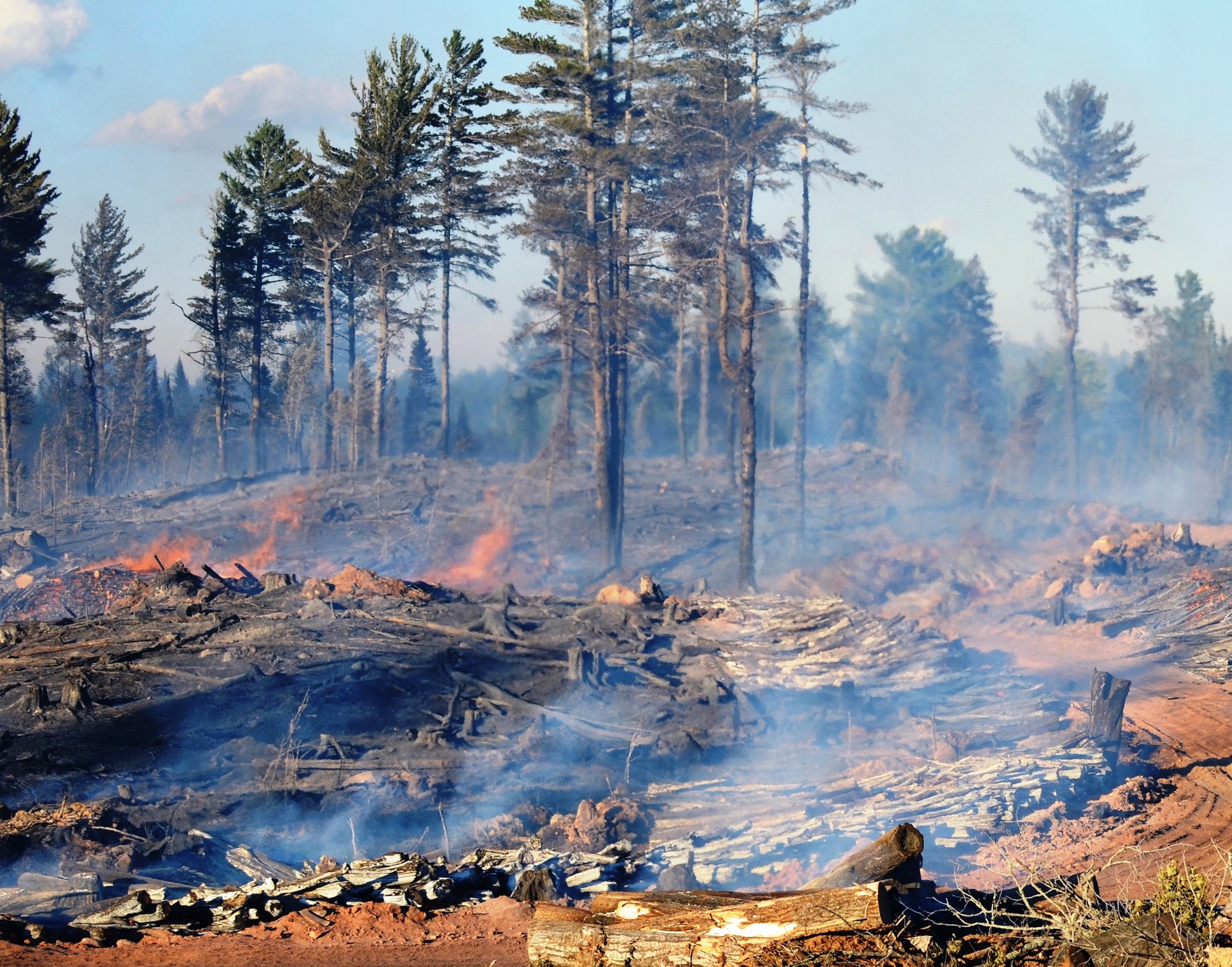
“It’s good to work, especially with the fire officers and see what that job entails,” Burton said. “This position is really great for someone looking to get into this field.”
Burton, who said he would love to be a DNR fire officer, was among the first firefighters on the site of the County Road 601 Fire.
Different hats
The fire was reported at about 1:05 p.m. July 30, 2015. Several local volunteer fire departments would eventually assist in battling the fire.
“Me and Jimmy (Johnston) were the first ones here, along with Ishpeming 57 (a large, four-wheel drive water unit) had three other guys on it,” Burton said, talking at the fire scene. “Initially, I was just following Jimmy in the dozer and making sure there weren’t any slop overs on the line and stuff like that. The past two days, I’ve been with him on the swamp rat, doing mop up, going 25 to 100 feet in the line, hitting all the hot spots, securing the line.”
Rice started his DNR firefighter career in Newberry. He was there for three years and then came to Crystal Falls.
“You can wear a lot of different hats,” Rice said. “Today, I was task force leader trainee, the day before I was an engine boss. I can run chainsaws falling trees that are safety hazards. So you can wear a lot of different hats on a fire.”
Rice had no firefighting experience prior to his coming to the DNR.
“That’s kind of a funny story,” he said. “Actually, when I first came to the DNR I was asked if I wanted to participate in firefighting and I said, ‘No, I’m not interested in that.’ And then the first time I was out, I delivered some supplies or lunches to a fire. I said, ‘I could do this.’ Now, it’s one of the most favorite things I have in the job.”
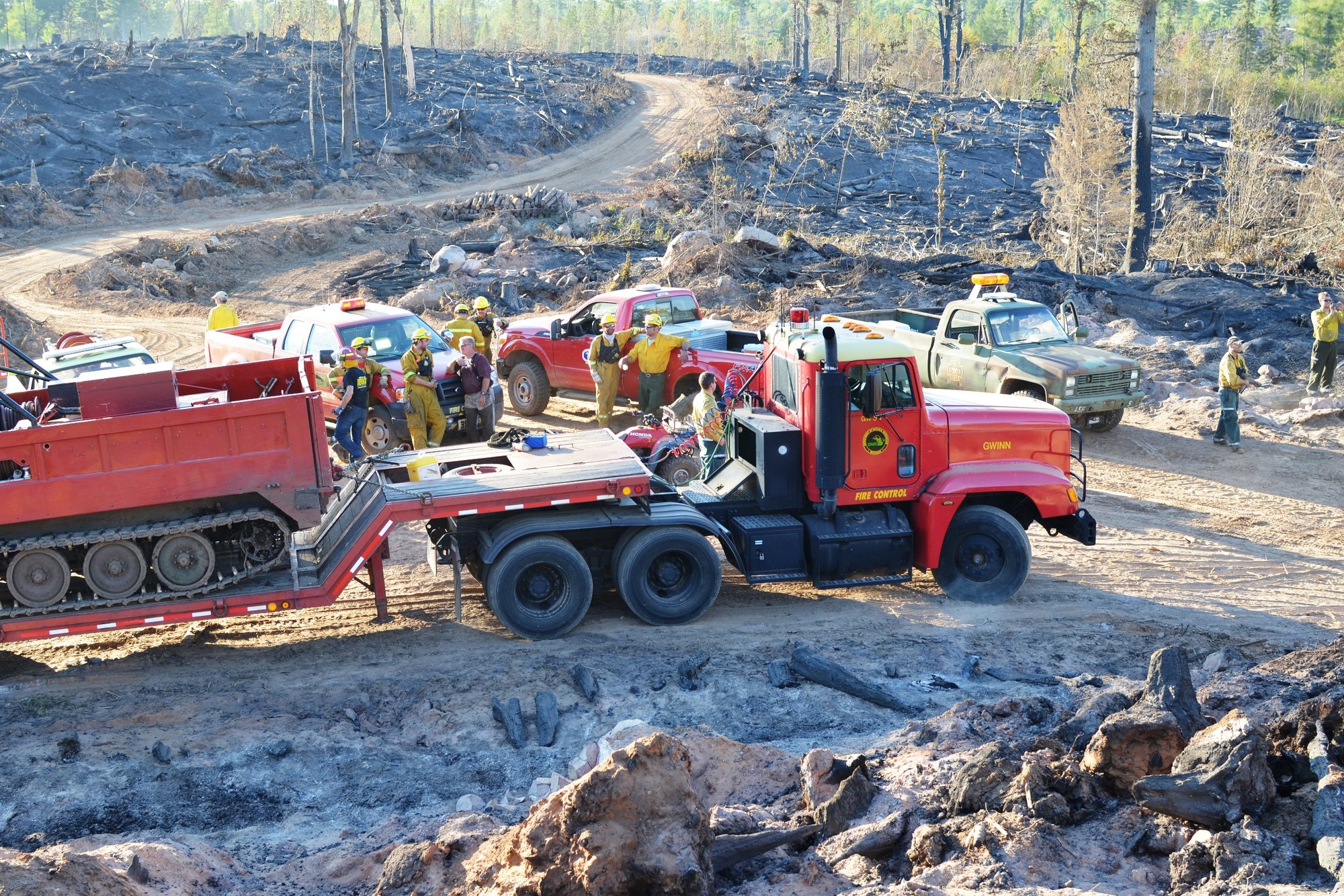 Rice worked on the County Road 601 blaze instructing others, while he was learning himself. Rice worked on the County Road 601 blaze instructing others, while he was learning himself.
“I was just trying to pass on little tricks,” he said. “It’s kind of a balance. You want them to try to pick up what they can on their own, but just add in little tricks and tips that you found through the years, too.”
Now that he’s experienced firefighting with the DNR, he’s definitely been bitten by the fire bug and he wants to do more.
“I can’t get enough of it,” Rice said, laughing. “In fact, I’d even go so far … if earlier on in my career if I knew I would have liked fire so much, I probably would have (gone) that route – more fire-oriented.”
Meshing
Rice said the County Road 601 fire was a good blaze for a lot of people to get experience on.
“This had a little bit of extreme fire behavior in the initial attack,” he said, looking over the charred landscape, characterizing the fire event. “… That might be kind of an eye opener to someone brand new, but I think mainly it was the meshing of several very experienced folks here with quite a few new people, too.
“Coming up in the next five to 10 years, a lot of that experience is going to be retiring so we’re trying to pass on quickly as much as we can to the new folks,” Rice said.
“I think it worked out so far pretty good, it’s ongoing,” he said, talking about the meshing.
Rice credited Pete Glover, the original incident commander on the 601 fire, with providing opportunities.
“He’s real good about working people into training positions,” Rice said. “He’s noticeably been trying to do that with people – try to team them up with more experienced people.”
This year, Burton has returned to work with the DNR and has been serving as a temporary fire officer, moving from the Escanaba office to Ishpeming. Rice is continuing his work as a forester and firefighter.
So far this summer, no Michigan DNR crews have been dispatched to any of the numerous fires out west.
For more information about the DNR’s fire management efforts, visit www.michigan.gov/firemanagement. See a list of some notable Upper Peninsula wildfires in recent history. Watch a DNR pilot’s early view of the County Road 601 Fire.
Catch upcoming stories by subscribing to free, weekly “Showcasing the DNR” articles. Check out previous Showcasing articles.
/Note to editors: Contact: John Pepin, 906-226-1352. Accompanying photos are available below for download and media use. Suggested captions follow. Credit: Michigan Department of Natural Resources, unless otherwise noted.
Burton-Rice: Michigan Department of Natural Resources firefighters Jacob “Jake” Burton, left, and Ed Rice photographed during the County Road 601 Fire in July 2015 in Marquette County.
Briefing: Pete Glover, second from left, initial Michigan Department of Natural Resources incident commander on the County Road 601 Fire, briefs firefighters at the DNR’s Ishpeming office.
Duck Lake: Evidence of the 2012 Duck Lake Fire in Luce County was still clearly visible in August 2015. The voracious fire consumed more than 21,000 acres.
End: Firefighters start to gather for an end of day meeting on the County Road 601 Fire Aug. 1, 2015, in Marquette County.
Flames: Flames burn up stacked log piles on the County Road 601 Fire in Marquette County in July 2015. The intensity of the fire, fueled by slash and the log piles from a winter logging operation, burned cleanly through the terrain.
Group: Firefighters assemble for a group photograph, having bested the 80-acre County Road 601 Fire in Marquette County in summer 2015.
Pulaski: Jacob “Jake” Burton works with a Pulaski to dig out a hot spot on the County Road 601 Fire in Marquette County in July 2015. The fire provided good opportunities for seasoned veterans to work with newer firefighters to pass on training tips and skills./
The Michigan Department of Natural Resources is committed to the conservation, protection, management, use and enjoyment of the state’s natural and cultural resources for current and future generations. For more information, go to www.michigan.gov/dnr.
|


 The DNR is reimbursed wages and any costs incurred during the dispatches of DNR staff to other parts of the country or to Canada.
The DNR is reimbursed wages and any costs incurred during the dispatches of DNR staff to other parts of the country or to Canada.
 “It was great working with Ed,” Burton said. “He’s really knowledgeable on fire. I mean he loves fire. So it was just good to be around a guy like that and see what he does out on a fire and just learn from him.”
“It was great working with Ed,” Burton said. “He’s really knowledgeable on fire. I mean he loves fire. So it was just good to be around a guy like that and see what he does out on a fire and just learn from him.”
 Rice worked on the County Road 601 blaze instructing others, while he was learning himself.
Rice worked on the County Road 601 blaze instructing others, while he was learning himself.




